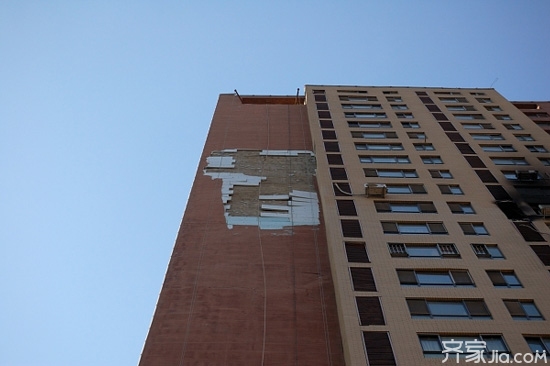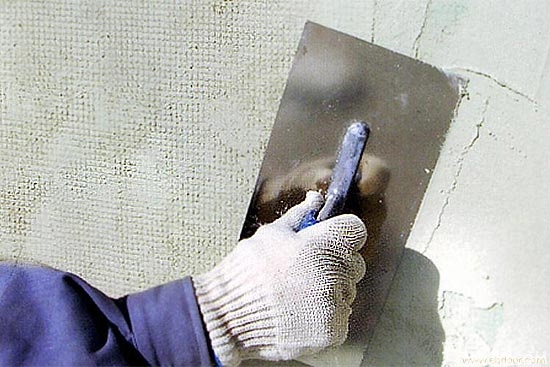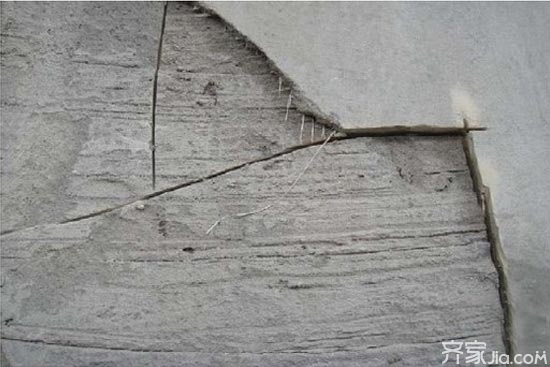The rainy days of the weekend made people suddenly start the winter rhythm. The house, where people live, shelters people from the heat, shelters the wind and rain. Many houses now have insulation, which can effectively help people resist the winter cold. News about the problem of the external insulation wall is also heard from time to time. What causes it? Xiao Bian will give you a glimpse of what happened. The external wall insulation is made of polymer mortar, glass fiber mesh cloth, flame-retardant molded polystyrene foam board (EPS) or extruded board (XPS) and other materials, and is used for heat preservation, waterproof, veneering, etc. Functionality in one. The on-site bonding construction is the preferred material to meet the current energy-saving needs of building construction, improve the external wall insulation of industrial and civil buildings, and is also the first material for energy-saving reconstruction of existing buildings. Currently widely used in the market are two types of bonding technology: EPS insulation board and polystyrene board particle slurry insulation. The time for external wall insulation to appear on the wall surface is generally a period of time after the completion of the construction, or after the cyclical changes of temperature in winter and summer, and the hidden quality or construction problems have caused these problems. In general, there will be four major problems. First, the insulation layer falls off Because of the quality problems of materials used and the lack of attention to the construction process, exterior wall insulation panels are prone to displacement, hollowing, and flaking, and there is emptying and shedding of the slurry insulation layer. If it is not dealt with in time, the wall insulation effect will be greatly reduced. the reason: 1, the basic structure factors. The outer wall of the frame structure at the joint of the truss beam and the masonry body is prone to damage of the thermal insulation layer caused by the deformation of the masonry body. Scaffolding holes and other unstaked, forming a local insulation layer is not strong enough to damage. The external wall decorative members are not fixed firmly and are displaced to form a push-pull effect, so that the insulating layer is partially hollowed, cracks are formed after long-term seepage, and eventually the insulation layer falls off; 2, improper pressure measures. Insulation board surface load is too large, or the use of negative wind pressure resistance measures are unreasonable, such as the coastal areas or high-rise building exterior wall using a non-nail adhesion bonding method, it is easy to make the insulation board wind pressure damage and empty drum off; 3, improper handling of the wall interface. In addition to clay brick walls, other walls are applied with interface mortar and then coated with slurry insulation material. Otherwise, the insulating layer may be directly hollowed or the interface treatment material is ineffective, forming an interfacial layer and the main wall hollow drum, with the formation of insulating layer empty drum. The surface of the insulation board also needs to be treated with an interface mortar, otherwise it will cause partial hollowing of the insulation layer. Second, the surface layer cracking The outer wall insulation plastering layer is composed of plastering mortar and reinforcing mesh. The plastering mortar is divided into bottom mortar and surface mortar. During the construction of the trowel layer, the first layer of mortar shall be applied to the surface of the already installed external insulation board, and the reinforcement mesh shall be added. The reinforcement mesh shall be lightly applied to the bottom mortar, and then the top surface shall be plastered with a mortar thickness of not less than 3 mm. Dew reveals no nets. Plastering mortar, also known as anti-cracking mortar or anti-cracking mortar, plays a key role in the entire exterior insulation system and builds a reliable reinforced protective layer for the exterior insulation board. The cracked surface layer cannot solve the problems of insulation, heat insulation, wind pressure resistance, fire resistance, freeze-thaw resistance, waterproof, weather resistance, flame retardance, air permeability, cracking, etc. of the external insulation. the reason: 1, material factors. The density of insulation boards for external wall insulation should be 18~22kg/m3. Some construction units will shoddy and use 18kg/m3 insulation boards. The density is not enough, which will easily lead to the cracking of the mortar layer; the natural shrinkage time of the insulation board is In the natural environment for as long as 60 days, due to factors such as capital turnover and cost control of production companies, the insulation board aged for less than seven days has been on the wall. The result is that the insulation board after the wall continues to shrink, adhere and then insulate. The screeded mortar layer on the board is pulled apart; 2, construction technology. The flatness of the base surface is too large, the use of adhesive thickness, multilayer board, surface polishing to find equal adjustment methods will lead to defects in the insulation quality; the surface of the base layer of dust, particles, etc. to prevent the paste material without interface treatment; insulation board bonding The area is too small, does not meet the specification, and the quality requirement of the bonded area cannot be achieved; in the case of sun exposure or high-temperature weather, the construction of the rice surface mortar layer will cause the cracks to occur when the surface layer loses water too quickly; 3, temperature changes. The thermal conductivity of the two materials of expanded polystyrene board and cracking mortar is different. The thermal conductivity of the expanded polystyrene board is 0.042W/(m·K), and the thermal conductivity of the cracking mortar is 0.93W/(m·K). The difference in thermal conductivity is 22 times. When the sun shines on the surface of the mortar in summer, the surface temperature of the mortar can reach 50~70°C. In case of sudden rainfall, the temperature of the mortar surface will drop to about 15°C, and the temperature difference can reach 35~55°C. This temperature difference and the influence of temperature difference between day and night and seasonal air temperature cause a large amount of deformation of the screed mortar layer, and cracks are likely to occur. Decoration construction knowledge High Pressure Heat Exchanger Tube High Pressure Heat Exchanger Tube,High Pressure Seamless Tube,High Pressure Stainless Steel Tube YUHONG GROUP CO.,LIMITED , https://www.jessro-pipefittings.com



Four Common Problems and Causes of Exterior Wall Insulation
1 2 Next> Total 2 Page
Page to page